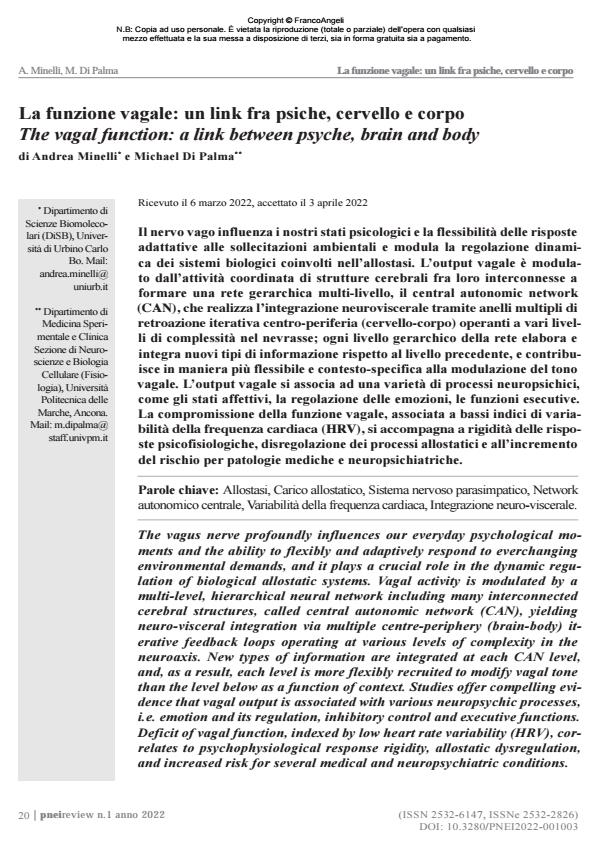The vagal function: a link between psyche, brain and body
Journal title PNEI REVIEW
Author/s Andrea Minelli, Michael Di Palma
Publishing Year 2022 Issue 2022/1
Language Italian Pages 18 P. 20-37 File size 320 KB
DOI 10.3280/PNEI2022-001003
DOI is like a bar code for intellectual property: to have more infomation
click here
Below, you can see the article first page
If you want to buy this article in PDF format, you can do it, following the instructions to buy download credits

FrancoAngeli is member of Publishers International Linking Association, Inc (PILA), a not-for-profit association which run the CrossRef service enabling links to and from online scholarly content.
The vagus nerve profoundly influences our everyday psychological moments and the ability to flexibly and adaptively respond to everchanging environmental demands, and it plays a crucial role in the dynamic regulation of biological allostatic systems. Vagal activity is modulated by a multi-level, hierarchical neural network including many interconnected cerebral structures, called central autonomic network (CAN), yielding neuro-visceral integration via multiple centre-periphery (brain-body) iterative feedback loops operating at various levels of complexity in the neuroaxis. New types of information are integrated at each CAN level, and, as a result, each level is more flexibly recruited to modify vagal tone than the level below as a function of context. Studies offer compelling evidence that vagal output is associated with various neuropsychic processes, i.e. emotion and its regulation, inhibitory control and executive functions. Deficit of vagal function, indexed by low heart rate variability (HRV), correlates to psychophysiological response rigidity, allostatic dysregulation, and increased risk for several medical and neuropsychiatric conditions.
Keywords: Allostasis, Allostatic load, Parasympathetic nervous system, Central autonomic network, Heart rate variability, Neuro-visceral integration.
Andrea Minelli, Michael Di Palma, La funzione vagale: un link fra psiche, cervello e corpo in "PNEI REVIEW" 1/2022, pp 20-37, DOI: 10.3280/PNEI2022-001003